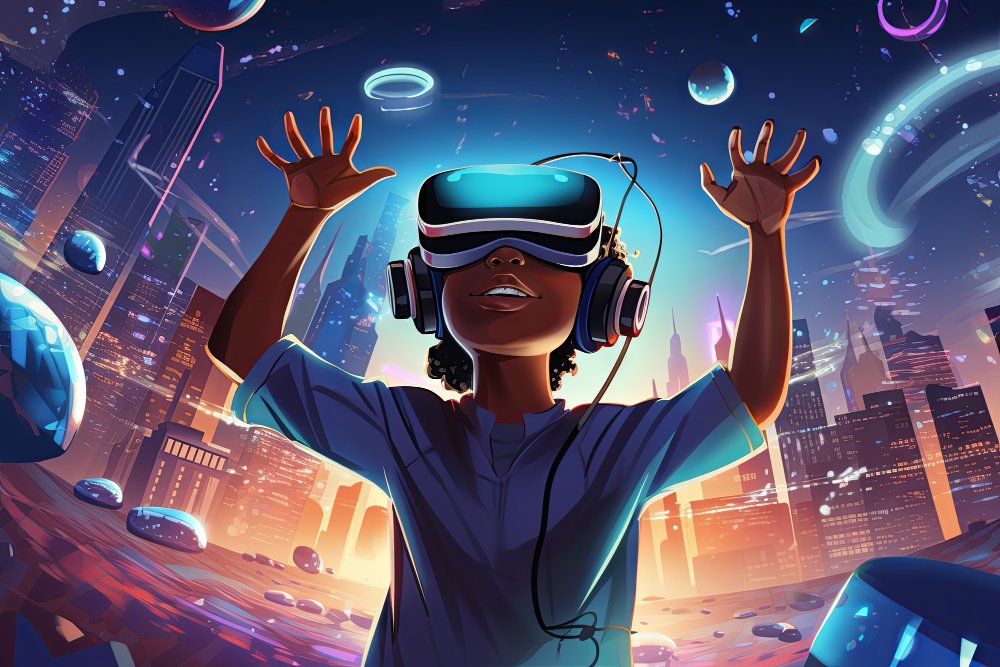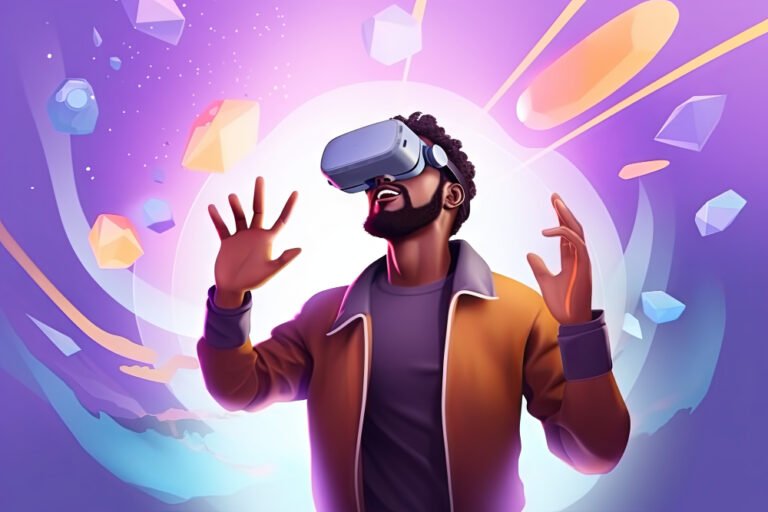Virtual Reality (VR) technology has exploded in recent years, presenting new ways to experience digital content completely immersive. Whether it is gaming, entertainment programme watching, education or professional training; VR took over the world of tech. But, as VR headsets become more common critics and consumers alike have grown worried that the technology might actually be bad for your eyes. In this article, we are going to examine is Virtual Reality bad for your eyes by looking at the science behind it and what you can do about it if there are indeed any adverse effects.
Table of Contents
Understanding Virtual Reality and Eye Health
VR headsets rendering digital spaces with which users can interact They usually come with two lenses to show images from screens that sit just in front of the wearer’s eyes. The operation of VR headsets and how they are used have stirred up a few inquiries about the bad effects on eye health.
The Mechanics of VR Headsets
A VR headset is essentially a pair of screens and lenses that combine to generate the illusion of depth. The screens show full pictures having high resolution, which through the lenses are magnified to cover user’s field of view. Furthermore, the lenses serve to focus images as well and make us think that is actually a 3D environment. The close distance of the screen as well as its exposure over time can harm our eyes, despite all their devices.
Common Eye Concerns with VR
- Digital Eye Strain: Prolonged use of VR headsets can actually cause digital eye strain. Common signs include dry eyes, blurred vision and eye fatigue. The fatigue comes from staring at screens for too long, as well the screen length phenomenon of VR.
- Accommodation and Convergence Issues: The need to focus on the VR headset, means your eyes are constantly re-focusing as well needing converge properly in the virtual 3-D space. These issues can cause strain and discomfort within the eyes, which is classified into categories of accommodation (the focusing part) and convergence insufficiency or disorder.
- Motion Sickness: VR motion sickness or virtual reality on its own usually happens if you have a conflict among visual , these being provided either in the recruitment of vestibules inside ear hearing and even with vision. This may cause nausea, dizziness, or even eyestrain.
- Reduced Blink Rate: People blink less often when in VR, leading to dry eyes and irritation The lower blink rate often occurs because of the heavy concentration needed to interact with the VR world.
Is VR Bad for Your Eyes?

While there are potential downsides, the effect of VR on eye health differs person to person and depends on usage patterns. Here lets discuss some aspects about VR usage.
Research and Studies
This is an area where VR and eye health have had relatively few studies. But previous research indicates that while VR may cause some temporary discomfort and strain to the eyes, it seems not,to do long term damage. Issues are mainly due to overuse and can be solved with good usage behavior.
Factors Affecting Eye Health
- Usage Duration: It is common to feel eye strain after using VR for an extended period. You can minimize these effects by taking frequent breaks and decreasing usage.
- Headset Quality: VR headsets with higher resolution and ergonomics will be less likely to strain your eyes. Comfort and visual fatigue problems can be solved with a good headset. Devices like Apple vision pro and meta quest 3 are offering best resolution screens.
- User Sensitivity: Users who have sensitive eyes or pre-existing conditions may be more affected by the symptoms. They should keep an eye on their symptoms and check in with an expert if they’re worried.
Solutions for Maintaining Eye Health While Using VR
Here are solutions to avoid or reduce the potential bad consequences of VR on your eyes:
1. Take Regular Breaks
The 20-20-20 rule is also key in reducing digital eye strain. 20-20-20 Rule – Every twenty minutes take a 2min break, and look at an object about 3m away. This exercise serves in relaxing the eye muscles and relieving strain which is directed towards eyes.
2. Adjust Headset Settings
Make sure your VR device is adjusted rightly to accommodate using glasses. Almost all headsets let you adjust the interpupillary distance (IPD) to match your eye gap, too. Accurate alignment relieves the eyes of excess strain and makes images more clear.
3. Maintain Proper Lighting
The darker the setting, more eye strain and discomfort you should expect upon taking off your VR. Stronger light will minimize the difference between the VR screen and everything around, which can provide a more enjoyable visual experience.
4. Keep Your Eyes Moisturized
In case, you feel dry eyes while using VR then lubricating eye drops can help your keep the eyes moist. This helps to reduce irritation and discomfort of reduced blinking.
5. Monitor Usage Time
Avoid over usage, restrict your use of VR session. Staring at VR display for a long time may lead to eye fatigue and discomfort; Limit the amount of time spend on it and take breaks to rest your eyes.
6. Consult an Eye Care Professional
If you have continued problems or concerns, see an eye care specialist. This will enable them to give you personalized advice and recommend solutions for your individual use case.
Check video for Maintain healthy eye
Sum up on Is Virtual Reality Bad for Your Eyes?
Virtual Reality is an exciting and engaging technology in many areas of life. It is true that some concerns still exist related to how safe or healthy VR can be on the eyes; however, knowing and dealing with them appropriately will alter the effect in a way which you have an increasingly pleasant and endurable journey when using it. VR users can enjoy the many rewards afforded by virtual reality while also looking after their eye health if they follow these guidelines and seek advice from an eyecare professional when necessary.
FAQs
1. Is it safe to use VR for long periods?
Prolonged use of VR can tire your eyes out. Taking frequent breaks and following 20-20-20 rule can help to prevent digital eye strain.
2. Can VR cause permanent damage to your eyes?
At the moment we do not have any solid scientific proof that using VR is harmful to your eyes in a permanent sense. But long time usage may lead to some discomfort and visual fatigue.
3. How can I reduce eye strain while using VR?
The important things to avoid eye strain are maintain a good distance, take breaks and lessen the screen brightness.
4. Does the quality of the VR headset affect eye comfort?
Yes, the quality of VR headsets does higher rates up to be eye comfort. Headsets that are of high resolution and have better ergonomics will not strain your eyes as much, which means you may comfortably wear them without any eye or neck ache.
5. What should I do if I experience persistent eye discomfort from VR?
If you have continued eye pain, see an optometrist for assistance. They will evaluate your symptoms and provide instructions for how to help relieve the pain in addition guidelines on preserving eye health.

